Poplar trees are a diverse group of fast-growing deciduous trees found across various regions of the world. Known for their tall, slender trunks and fluttering leaves, poplars belong to the genus Populus and come in several varieties, each with unique characteristics.
The types of poplar trees include species such as the Eastern Cottonwood, White Poplar, and Lombardy Poplar, all of which are valued for their adaptability, quick growth, and various uses in landscaping, timber, and environmental restoration. Each type thrives in different conditions, making them suitable for a range of ecological and aesthetic purposes.
Different Types of Poplar Trees
Canadian Poplar
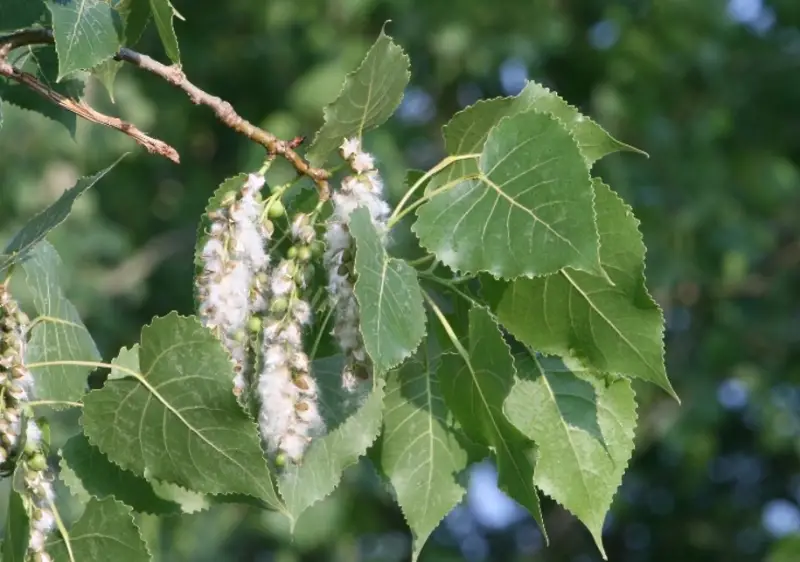
Canadian Poplar (Populus deltoides) is a prominent tree species widely distributed across North America, recognized for its ecological significance and adaptability to various environments. Typically reaching heights of 50 to 100 feet, this deciduous tree features a broad, rounded crown that provides excellent shade. The leaves are large, triangular to deltoid in shape, with a glossy green upper surface and a lighter green underside, turning a vibrant yellow in the fall.
The bark of Canadian Poplar is initially smooth and grayish, developing deep furrows and a darker color as it matures. This species thrives in a variety of soil types, particularly in moist, fertile conditions along riverbanks and floodplains. Its ability to grow quickly and establish itself in diverse environments makes it a valuable choice for landscaping and reforestation efforts.
Canadian Poplar plays a vital role in local ecosystems by providing habitat and food sources for various wildlife species, including birds and insects. Its rapid growth and resilience also contribute to erosion control and the stabilization of soil along waterways, enhancing the ecological health of the regions where it is found.
California Poplar
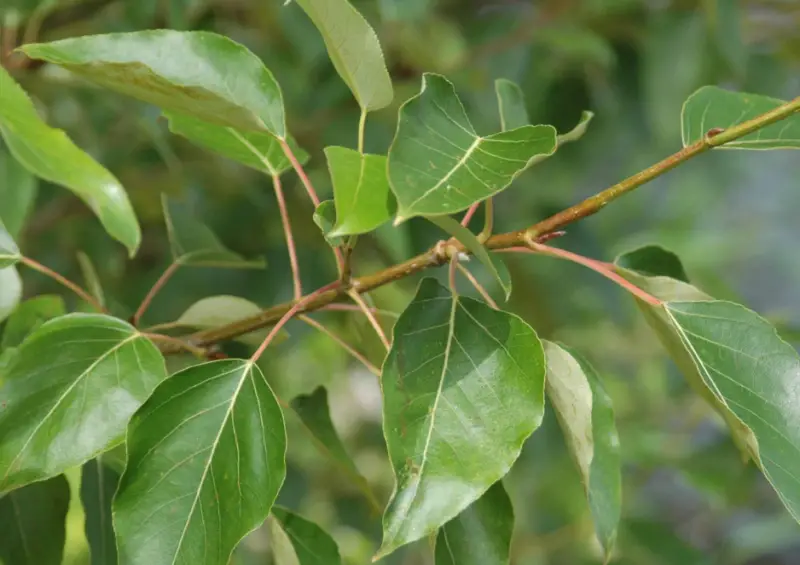
California Poplar (Populus trichocarpa) is an impressive large tree, typically reaching heights of 30 to 50 meters, with some specimens exceeding a trunk diameter of 2 meters, making it the largest poplar species in the Americas. This tree is often found in riparian zones, where it thrives in moist, well-drained soils.
While California Poplars are generally considered fairly short-lived, with a lifespan of around 50 to 100 years, some individuals have been known to live up to 400 years under optimal conditions. Their robust size and rapid growth make them an attractive option for landscaping, particularly in large open spaces.
The California Poplar is also an important ecological species, providing habitat and food for various wildlife. Its ability to adapt to different environmental conditions enhances its value in both urban and natural landscapes, making it a significant species for conservation and reforestation efforts.
Downy Poplar
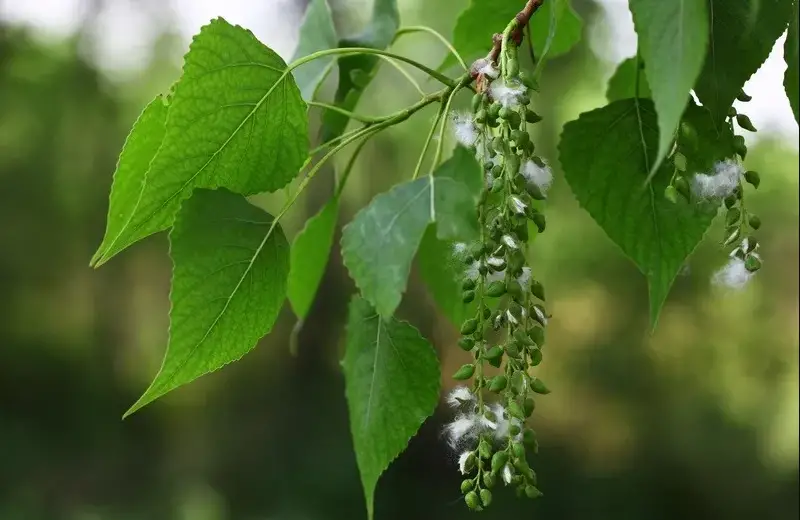
Downy Poplar (Populus tomentosa) is a tall tree that can reach heights of 50 to 100 feet at maturity, making it a prominent feature in its environment. The trunk and branches display a light to medium grey coloration, with the trunk characterized by coarse furrowing as the tree ages.
The leaves of the Downy Poplar are alternate and deciduous, typically measuring 4 to 6 inches long and 3 to 4 inches wide. The mature leaves exhibit a medium to dark green color on their upper surface, while the underside is a pale green, creating a noticeable contrast. The petioles, which are 2 to 3 inches long, are generally pale green or pale yellow, further distinguishing this species.
Known for its rapid growth and adaptability, the Downy Poplar thrives in a variety of soil types and is often used in landscaping for its aesthetic appeal and shade. Its robust structure and attractive foliage make it a valuable addition to parks and urban areas, contributing to biodiversity and enhancing the beauty of outdoor spaces.
Trembling Aspen
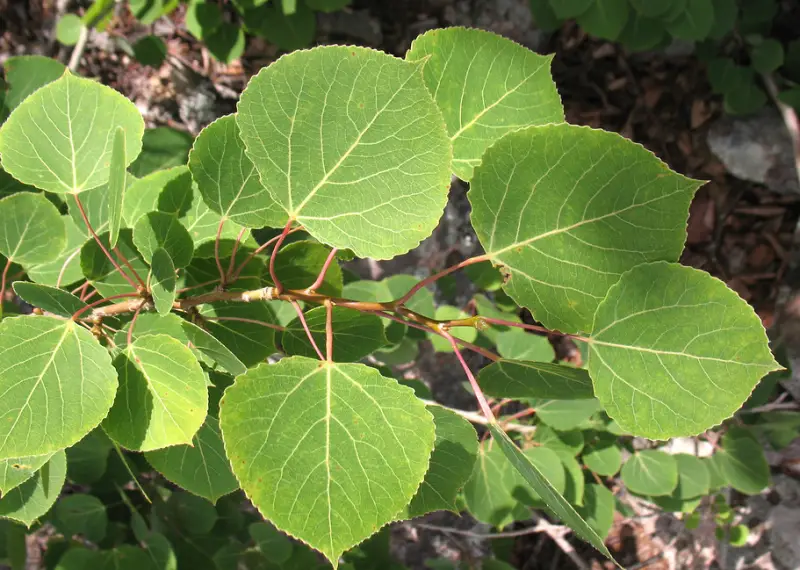
The Trembling Aspen (Populus tremuloides) is a stunning tree that can grow up to 65 feet tall under optimal growing conditions. One of its most notable features is its creamy white bark, which is adorned with dark brown or light gray markings, giving it a distinctive appearance that stands out in any landscape.
In spring, the tree produces tiny flowers that cluster together to form silvery catkins, which emerge before the leaves begin to unfurl, creating an early sign of the season’s arrival. The leaves of the Trembling Aspen are round to oval in shape, initially appearing in a light green hue. As autumn approaches, they transform into a brilliant gold, creating a spectacular display of color.
During the summer months, greenish-white fruit capsules, less than half an inch long, develop on the tree, adding another layer of interest to its seasonal changes.
Lombardy Poplar
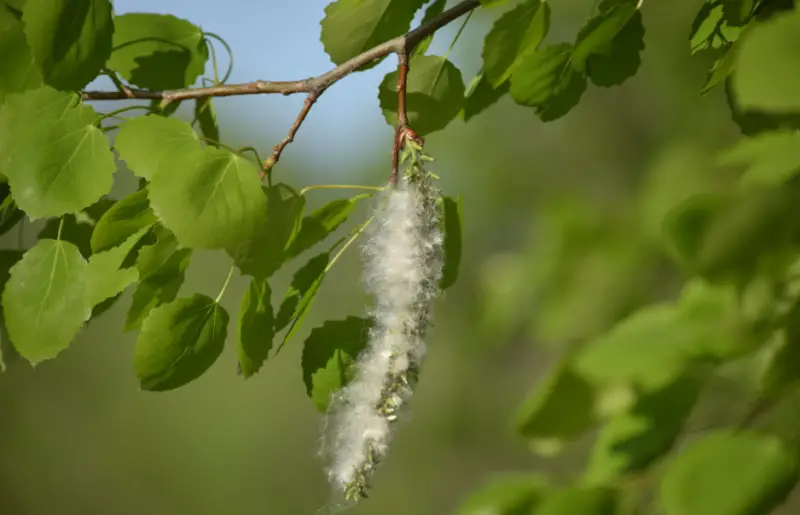
Lombardy Poplar (Populus nigra ‘Italica’) is a distinctive tree renowned for its columnar form and unique branching structure, where the branches begin close to the ground and grow upward, remaining parallel to the trunk. This characteristic gives the tree a tall, narrow silhouette, making it an excellent choice for various landscaping applications.
While the fall foliage of the Lombardy Poplar turns a vibrant yellow, these trees are not primarily cultivated for their autumn color display. Instead, their striking shape and rapid growth are what truly set them apart. As the tree matures, its bark transforms into a dark black hue and develops furrows, adding to its rugged charm.
Lombardy Poplar is a fast-growing species that can reach heights of up to 50 feet with a spread of 10 to 15 feet, making it an ideal option for those seeking immediate privacy or windbreak solutions. Its quick growth and columnar shape have made it a popular choice for creating “living wall” privacy screens in gardens and landscapes, providing both functionality and aesthetic appeal.
White Poplar
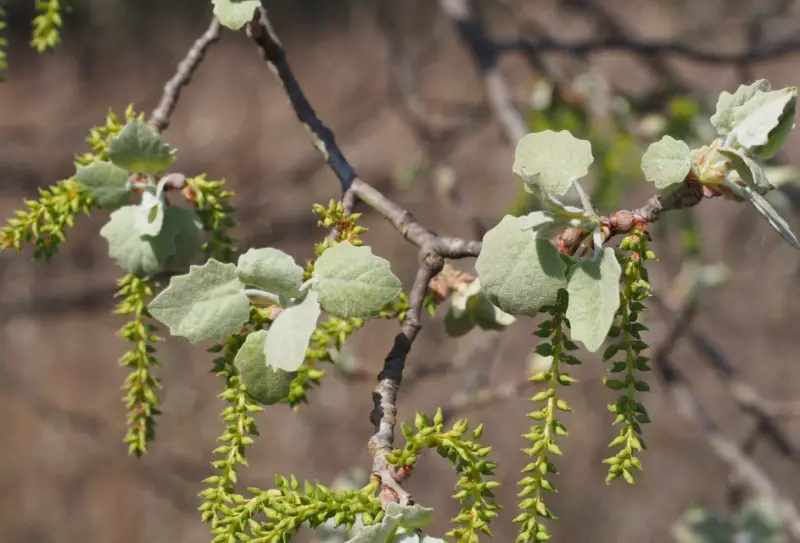
White Poplar (Populus alba) is a tall, deciduous tree that showcases a broad pyramidal crown, adding an impressive vertical element to any landscape. The bark of young White Poplar trees is smooth and displays a greenish-white to grayish color, marked with characteristic diamond-shaped spots. As the tree matures, the bark at the base of the trunk develops fissures and takes on a blackish hue, contrasting with the lighter bark higher up.
Known for its fast growth, the White Poplar can reach heights of up to 27 meters, with a maximum spread of about 2 meters. Despite its rapid growth rate, this tree is relatively short-lived compared to other species. It is commonly used in parks, golf courses, and other expansive landscapes, where its size and shape can be appreciated.
White Poplar thrives in open, moist sites, often found growing along waterways, where it contributes to the ecological balance of the area. Its quick growth and ability to adapt to various conditions make it a popular choice for those looking to enhance large outdoor spaces with a striking and functional tree.
Japanese Poplar
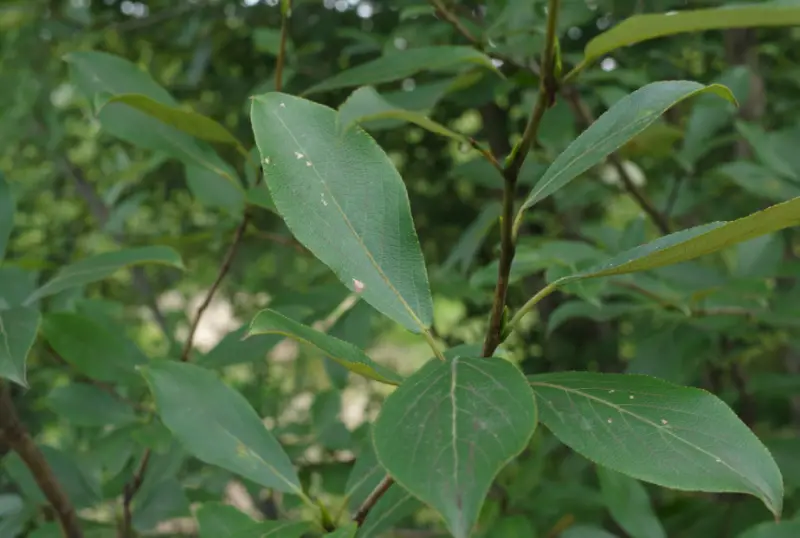
The Japanese Poplar (Populus maximowiczii) is a striking tree that can reach heights of approximately 30 meters when fully mature. One of its most distinctive features is its deeply fissured grey bark, which gives it a rugged appearance. The leaves of the Japanese Poplar are typically around 10 cm long, with toothed edges and a pale green underside, providing a lovely contrast to the darker upper surface.
In early spring, the tree produces catkins, which are the reproductive structures of the poplar. The male catkins are red and can grow to about 10 cm in length, while the green female catkins can reach approximately 15 cm long. These catkins not only add visual interest but also serve an important role in the tree’s reproduction.
The Japanese Poplar’s columnar shape makes it an attractive option for landscaping, particularly in backyard settings. Its tall, narrow profile allows it to fit neatly into smaller spaces while still providing a significant visual impact. The tree is not only aesthetically pleasing but also practical, as it offers shade and can serve as a windbreak.
Bigtooth aspen
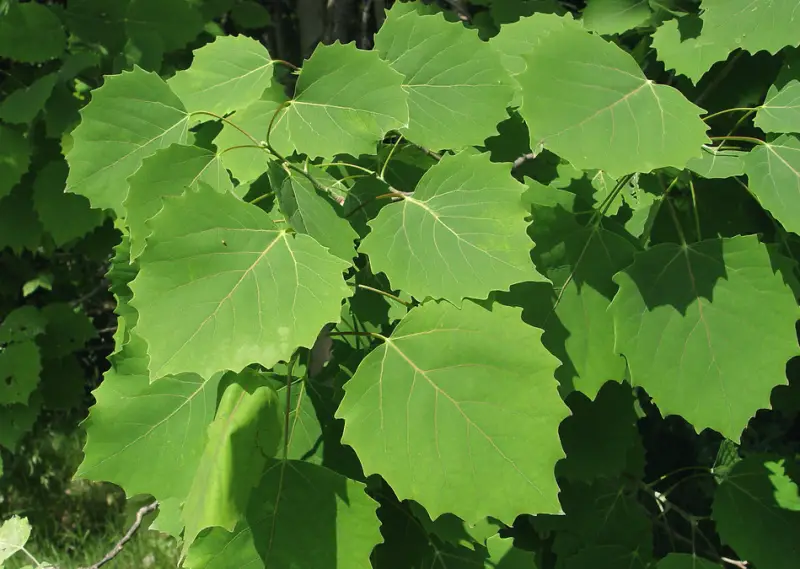
Bigtooth Aspen (Populus grandidentata) is a medium-sized tree known for its narrow, rounded crown, making it a visually appealing addition to various landscapes. The tree derives its name from the prominent, large, blunt teeth that line the edges of its leaves. The leaves are broadly ovate with sharp-pointed tips and rounded bases, showcasing a dull green color during the summer months. As fall approaches, the leaves transform into a vibrant yellow, adding a splash of color to the environment.
The bark of the Bigtooth Aspen is initially a smooth green-gray, but as the tree matures, it develops a distinctive white-gray hue and becomes furrowed with flat, scaly ridges. The slender, brown twigs are fuzzy during the new growth phase, further adding to the tree’s unique characteristics.
While the wood of the Bigtooth Aspen is predominantly used for pulp, its light heartwood and attractive grain make it a popular choice for veneers in woodworking. Additionally, this tree serves as a vital winter food source for wildlife such as moose and ruffed grouse, highlighting its ecological importance.
Grey Poplar
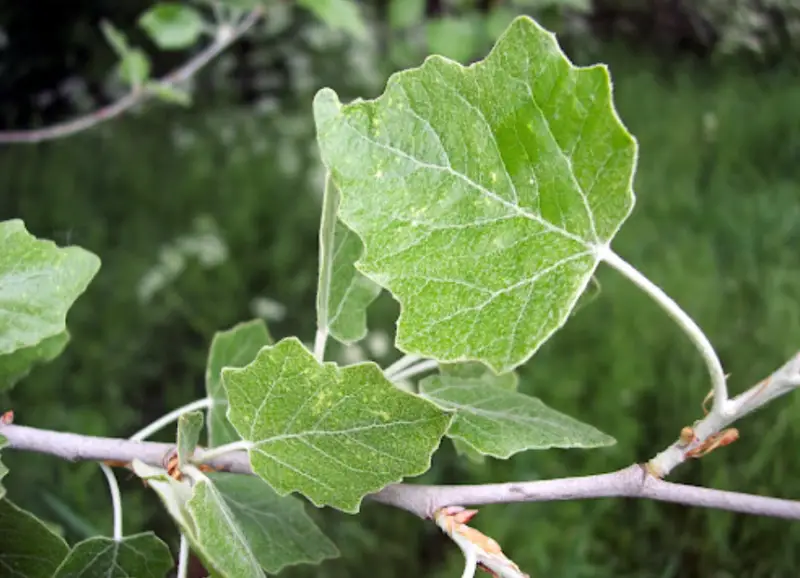
The Grey Poplar (Populus x canescens) is a natural hybrid resulting from the cross between the White Poplar and the Aspen, combining characteristics from both parent species. One of its notable features is the silvery coloration of its leaves, inherited from the White Poplar, along with a flattened petiole from the Aspen that allows the leaves to tremble in the breeze, ensuring that the poplars are rarely still during the summer months.
Reaching impressive heights of up to 30 meters, the Grey Poplar is loftier than either of its parent trees, showcasing its hybrid vigor. The tree is distinguished by its pale grey bark and its triangular to ovate, dark green leaves, which are grey and downy on the underside. Additionally, the shorter shoots of the tree bear oval to rounded leaves that are light green beneath, providing a striking contrast.
In autumn, the leaves transform into vibrant shades of red, orange, and yellow, creating a stunning display of color. Male Grey Poplar trees produce red catkins that bloom in early spring, while green female catkins are produced infrequently.
Eastern Cottonwood
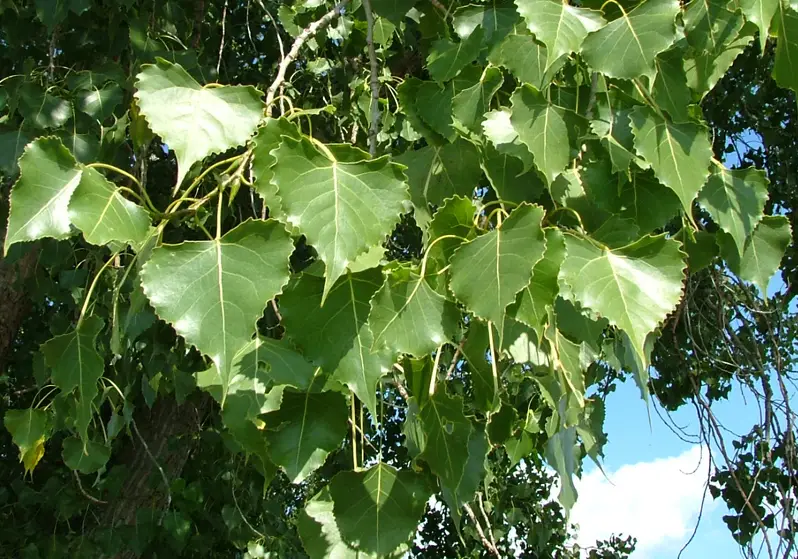
Eastern Cottonwood (Populus deltoides) is a large, fast-growing tree commonly found along streams, rivers, and in lowland areas, making it a vital component of riparian ecosystems. This impressive tree typically reaches heights of 80 to 100 feet, with the potential to grow as tall as 200 feet under optimal conditions, providing a striking presence in the landscape.
The Eastern Cottonwood is easily identifiable by its yellowish twigs, coarsely toothed leaves, and distinctive gummy end buds, which set it apart from other poplar species. In its youth, the tree exhibits a pyramidal shape, but as it matures, it develops a broad vase-like form with open, sprawling branches. Over time, the Eastern Cottonwood’s structure becomes more ragged and irregular.
This tree is not only notable for its size and shape but also for its ecological importance. It provides habitat for various wildlife species and plays a significant role in stabilizing soil along waterways. The Eastern Cottonwood is an excellent choice for those looking to enhance their landscapes with a majestic and functional tree that thrives in moist environments.
Fremont Cottonwood
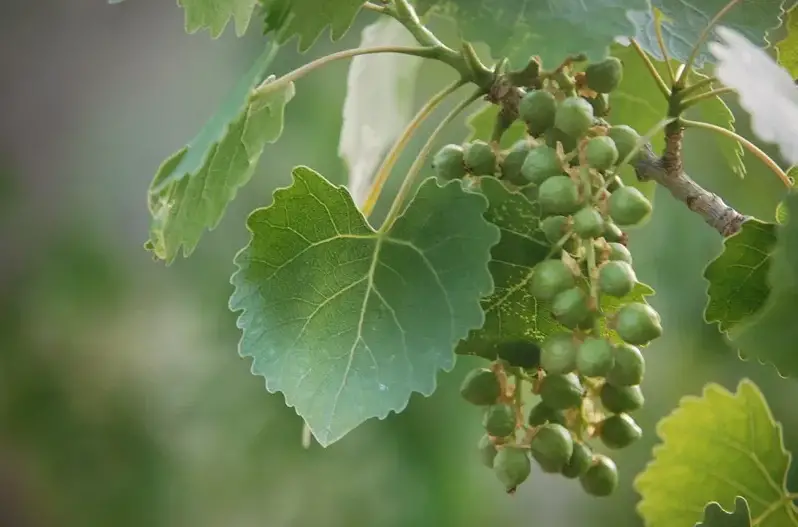
The Fremont Cottonwood (Populus fremontii) thrives in riparian areas, commonly found near streams, rivers, and wetlands. This large tree typically reaches heights of 12 to 35 meters and can develop a trunk diameter of up to 1.5 meters.
In its youth, the bark of the Fremont Cottonwood is smooth, but as the tree matures, it becomes deeply fissured, showcasing whitish, cracked bark on older specimens. During the blooming season, which occurs from March to April, the tree produces long, drooping catkins that cluster together.
The leaves of the Fremont Cottonwood are heart-shaped, featuring prominent white veins and coarse crenate teeth along the edges. These distinct characteristics make the tree easily recognizable.
The Fremont Cottonwood plays an essential role in the ecosystem, serving as an important source of food and habitat for various bird and butterfly species. Its combination of ecological value and striking appearance makes it a valuable addition to any landscape.
Balsam Poplar
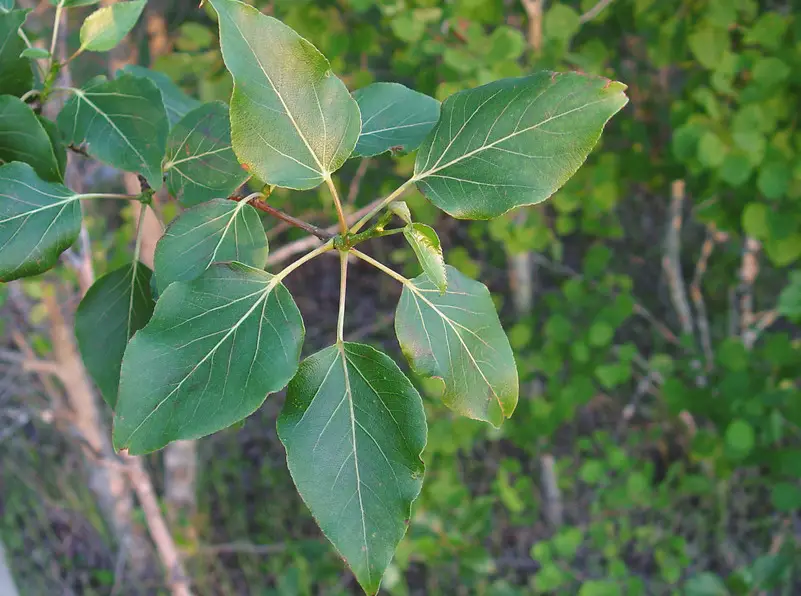
Balsam Poplar (Populus balsamifera) is a robust tree that typically grows to about 80 feet tall at maturity, with a spread of around 50 feet. One of its most distinctive features is its pointed, shiny, oval-shaped leaves, which have resin-dotted undersides, adding to the tree’s unique appearance.
This species stands out among native poplars due to its sticky, fragrant buds, which emit a pleasant balsam scent. In early spring, male trees produce long, hanging catkins that bloom before the leaves unfurl, while female trees disperse fluffy seeds into the air by late spring, contributing to the tree’s reproductive cycle.
Balsam Poplar is an important food source for various wildlife species that utilize its twigs for nourishment. The tree’s light, soft wood is valued for its use in pulp production and construction, making it economically significant as well.
Balsam Poplars are adaptable and can thrive in a wide range of soil conditions, though they particularly prefer humid environments such as flood plains, riverbanks, and other lowland areas. Their impressive stature, ecological benefits, and versatility make Balsam Poplars a valuable addition to landscapes, especially in suitable riparian zones.
Black Poplar
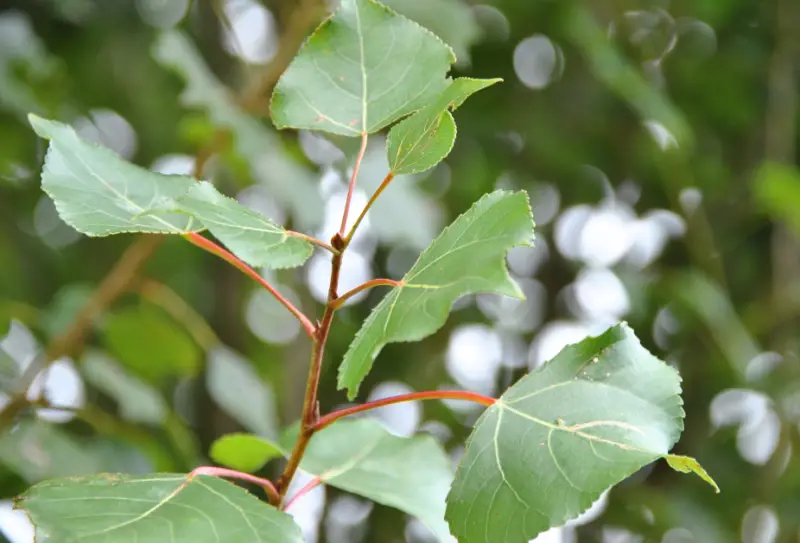
Black Poplar (Populus nigra) is a rare and beautiful variety that typically thrives along riverbanks but can also be cultivated in larger spaces. Known for its striking appearance, this deciduous tree features whispering green leaves that transform into vibrant yellow hues during autumn, creating a stunning seasonal display.
As a fast-growing tree, the Black Poplar has a spreading habit and is characterized by its dark bark. The leaves are diamond-shaped and exhibit a bronze tint that matures into a bright green color. In mid-spring, the tree produces bright red catkins, adding visual interest to its foliage.
Once nearly driven to extinction, there has been a renewed interest in the conservation and regeneration of Black Poplar trees, highlighting their ecological importance. Columnar varieties of Black Poplar are widely used in ornamental landscape plantings, particularly in the picturesque villas of Italy and other regions in southern Europe.
Himalayan Poplar
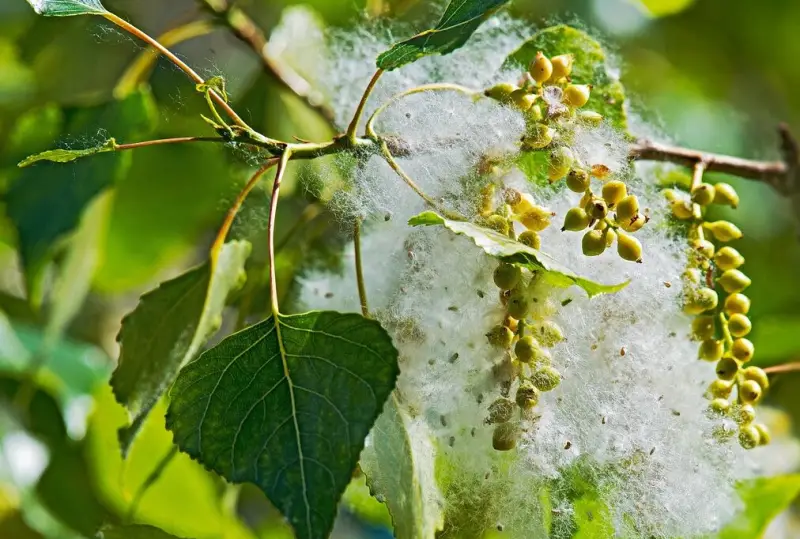
Himalayan Poplar (Populus ciliata) is a large deciduous tree known for its tall, clean, straight trunk and wide, rounded crown. The bark of young trees is smooth and greenish-grey, while older trees develop dark brown bark characterized by vertical cracks, giving them a rugged appearance.
The leaves of the Himalayan Poplar are broadly ovate, featuring serrulate-crenate and hairy margins that add texture and visual interest. In spring, drooping raceme catkins appear either before or alongside the emergence of leaves. This species is dioecious, meaning that individual flowers are either male or female. The male flowers have a bell-shaped perianth, while the female flowers are bluntly toothed, differentiating them easily.
The female flowers produce capsules that enclose an average of 100 to 150 seeds, each covered with long, silky hairs, which assist in wind dispersal. The Himalayan Poplar is not only an attractive tree but also plays a vital ecological role in its native habitat, providing shelter and food for various wildlife species. Its majestic form and adaptability make it a valuable choice for large landscapes and reforestation efforts.
Euphrates or Desert Poplar
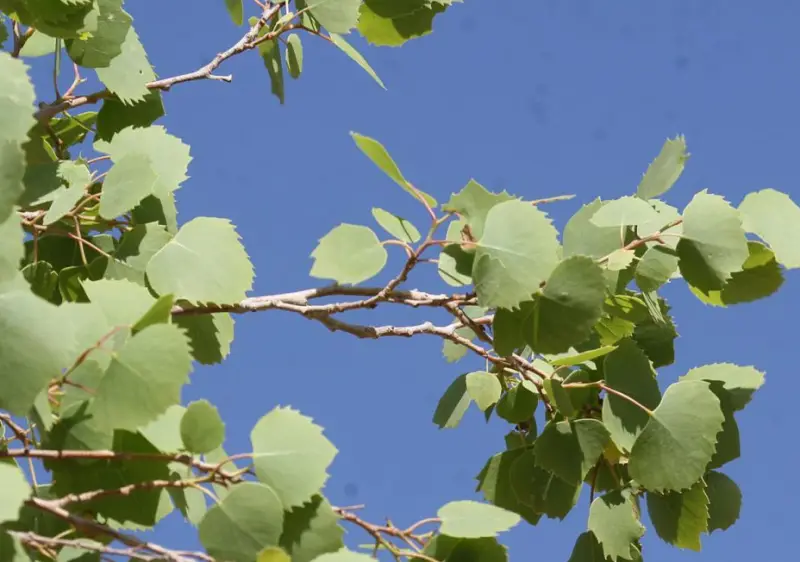
The Euphrates Poplar (Populus euphratica) is a medium-sized tree that can grow up to 15 meters in height and develop a trunk girth of around 2.5 meters under favorable conditions. The tree often exhibits a bent and forked stem, and older trunks feature thick, rough bark in an olive-green hue. A unique characteristic of this species is its distinct wood color: while the sapwood is white, the heartwood has a deep red tone that darkens toward the center, eventually becoming almost black.
The root system of the Euphrates Poplar spreads widely, though not very deep, enabling the tree to survive in arid and saline soils. The leaves are highly variable in shape, adapting to the challenging environments in which the tree thrives.
This tree is commonly used in afforestation programs, particularly in desert regions, where it helps stabilize soil, combat erosion, and create windbreaks. In addition to its ecological uses, the bark of the Euphrates Poplar is reported to have antihelminthic properties, adding medicinal value to its already important environmental role. Its resilience and utility make it a valuable asset in reforestation and desert greening efforts.
Hybrid Poplars
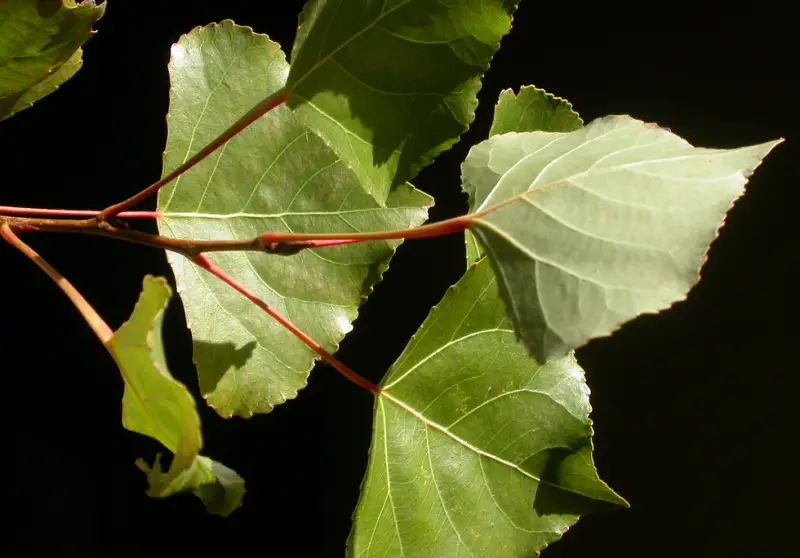
Hybrid Poplars are the result of crossing two known poplar varieties to create a new, improved species. These hybrids can arise from both natural pollination and intentional plant breeding efforts. Designed to harness the rapid growth characteristics of their parent plants, Hybrid Poplars also offer increased disease resistance and improved tolerance to a broader range of climatic conditions.
Some notable examples of Hybrid Poplars include the Imperial Poplar (Populus x euramericana “Imperial”), Manitou Poplar (Populus x “Manitou”), Prairie Sky Poplar (Populus x euramericana “Prairie Sky”), and Walker Poplar (Populus x “Walker”). Each of these hybrids is developed for specific qualities, such as height, growth rate, and adaptability to various environments.
These trees are particularly valued in landscaping and forestry due to their fast growth and ability to thrive in diverse conditions. Hybrid Poplars are commonly used for windbreaks, erosion control, and as shade trees, making them a versatile and functional choice for both urban and rural settings. Their resilience and rapid establishment contribute significantly to enhancing green spaces and promoting ecological health.
Big-tooth Aspen
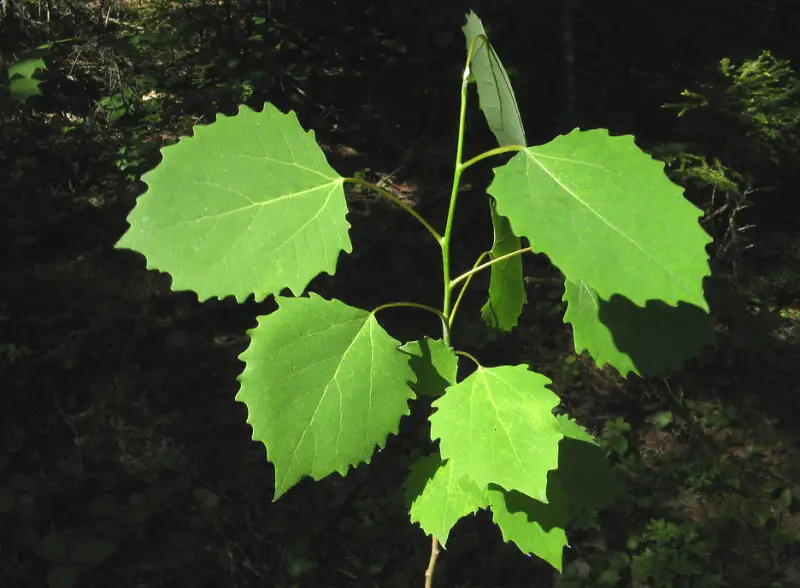
Big-tooth Aspen (Populus grandidentata) is a notable tree species commonly found in North America. It is easily recognized by its distinctive large, serrated leaves, which can measure up to 6 inches in length. The leaves are typically bright green in the summer, turning vibrant yellow in the fall, providing a stunning seasonal display. The tree has a smooth, greenish-white bark when young, which matures to a light gray color with shallow furrows.
Big-tooth Aspen typically grows to a height of 50 to 80 feet and prefers well-drained, moist soils, making it adaptable to various environments, including upland and lowland areas. The tree often forms clonal stands through root suckering, allowing it to thrive in disturbed areas.
Chinese Necklace Poplar
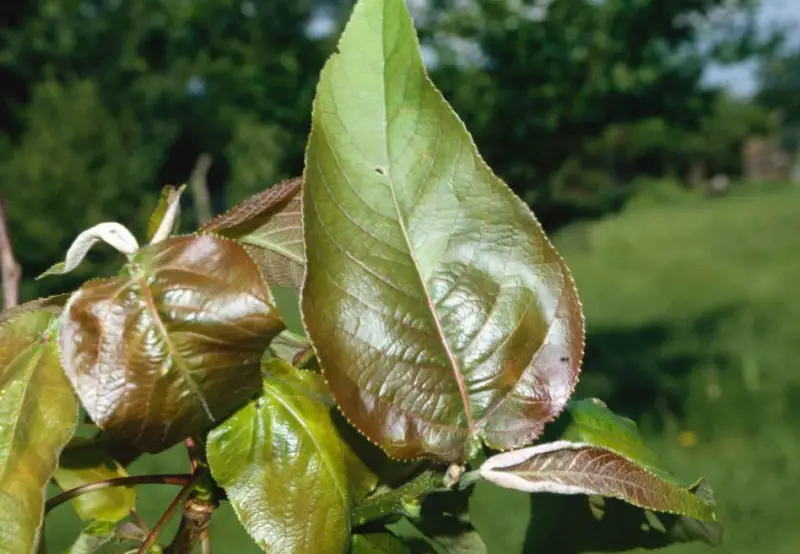
Chinese Necklace Poplar (Populus × canadensis ‘Nigra’) is a hybrid tree known for its striking appearance and distinctive narrow crown. This fast-growing tree can reach heights of up to 70 feet, making it a prominent feature in many landscapes. The leaves are elongated and glossy, providing a lush, vibrant green canopy during the growing season. The bark is smooth and grayish when young, becoming furrowed and darker as it matures.
This species is particularly valued for its rapid growth rate, often adding several feet in height each year, which makes it a popular choice for quick shade and windbreaks. The Chinese Necklace Poplar thrives in a variety of soil types but prefers well-drained, moist conditions.
Simon’s Poplar
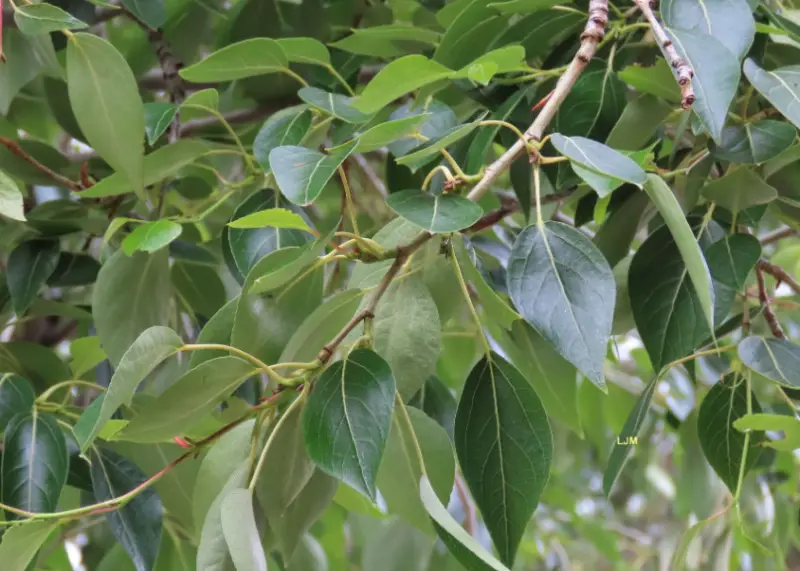
Simon’s Poplar (Populus simonii) is a robust tree species that is highly valued for its remarkable resistance to pests and diseases, making it a reliable choice for various landscapes. Typically reaching heights of 40 to 60 feet, this deciduous tree features a broad crown that provides ample shade. The leaves are large, heart-shaped, and have a glossy dark green appearance, turning a bright yellow in the fall.
The bark of Simon’s Poplar is initially smooth and grayish but develops a rough texture with age, becoming deeply furrowed. This tree is particularly well-suited for challenging growing conditions, including urban environments and poor soil, showcasing its adaptability. It thrives in both wet and dry areas, making it an excellent choice for erosion control along riverbanks and other disturbed sites.
Laurel-leaf Poplar
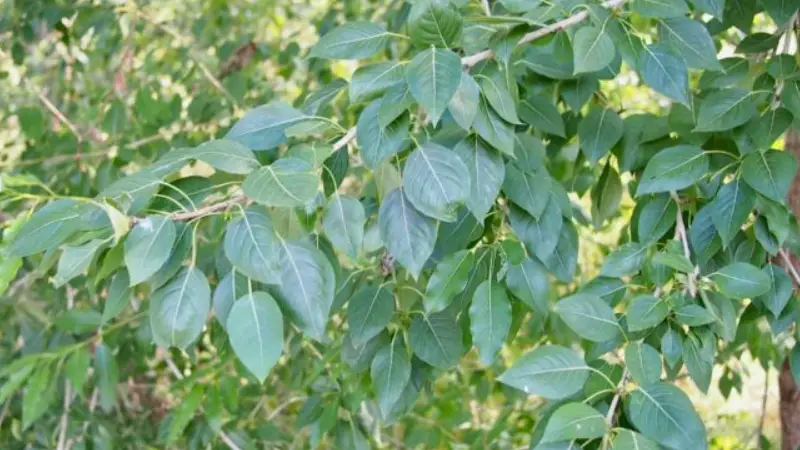
Laurel-leaf Poplar (Populus laurifolia) is a striking tree species known for its elegant appearance and unique foliage. Typically growing to heights of 40 to 60 feet, this deciduous tree features a graceful, pyramidal shape that adds visual interest to any landscape. The leaves are particularly notable; they are glossy, elongated, and resemble those of laurel shrubs, with a rich green color that remains vibrant throughout the growing season.
The bark of Laurel-leaf Poplar is smooth and light gray when young, maturing to a more textured surface as the tree ages. This species thrives in well-drained, moist soils, often found near water bodies. Its adaptability to various soil conditions, along with its resistance to drought, makes it a suitable choice for urban environments and landscaping projects.
Wilson’s Poplar
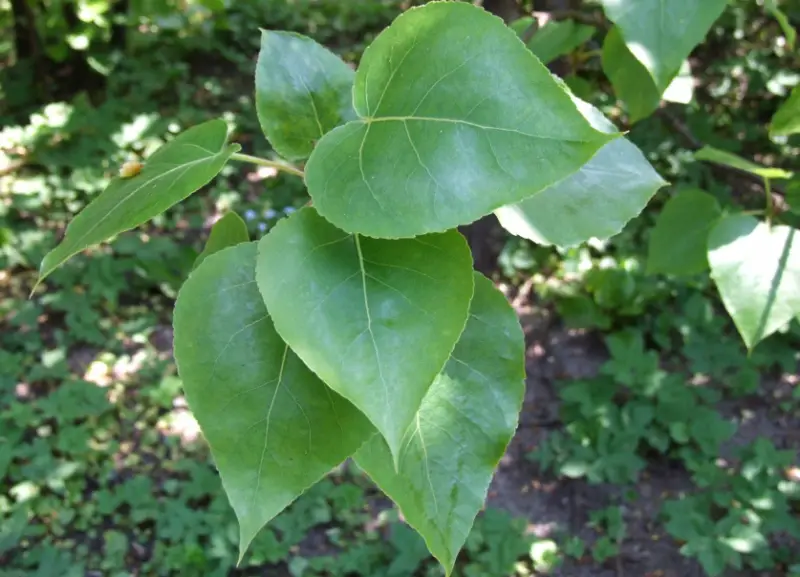
Wilson’s Poplar (Populus wilsonii) is a sturdy tree species valued for its robust structure and remarkable adaptability to diverse environmental conditions. Typically reaching heights of 50 to 70 feet, this deciduous tree features a broad, rounded crown that provides ample shade. The leaves are large, ovate, and dark green, offering a lush canopy that turns golden-yellow in the fall.
The bark of Wilson’s Poplar is initially smooth and grayish, becoming deeply furrowed with age. This species thrives in a variety of soil types, including clay, loam, and sandy soils, and can tolerate both wet and dry conditions. Its resilience to environmental stresses, such as drought and poor soil quality, makes it a popular choice for restoration projects and urban landscaping.
Wilson’s Poplar not only enhances the aesthetic value of landscapes but also plays a crucial role in supporting local wildlife, providing habitat and food sources for birds and insects.
Narrow Leaf Cottonwood
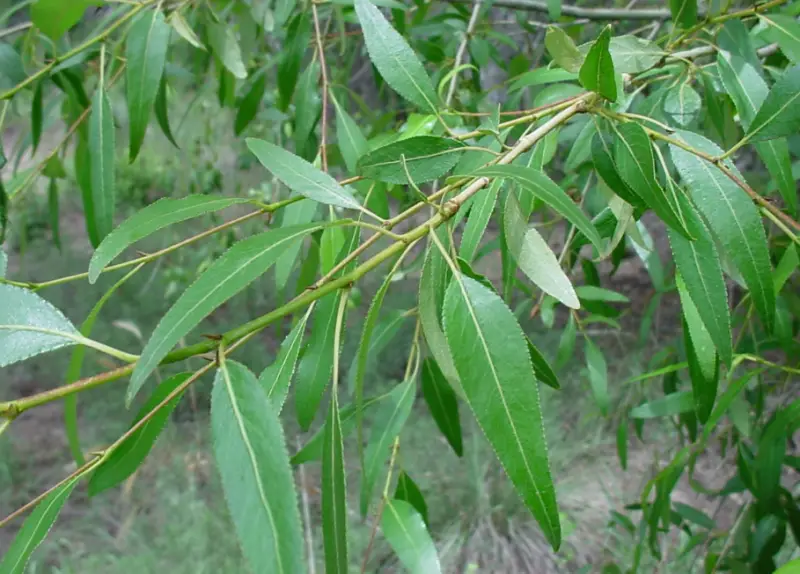
Narrow Leaf Cottonwood (Populus angustifolia) is a distinctive tree species characterized by its slender leaves and narrow, upright form. Typically growing to heights of 30 to 50 feet, this deciduous tree features elongated, lance-shaped leaves that are bright green on the upper surface and pale beneath, providing a delicate texture to the landscape. In the fall, the leaves turn a vibrant yellow, adding seasonal color.
The bark of the Narrow Leaf Cottonwood is smooth and light gray when young, becoming rough and deeply fissured with age. This species is well-adapted to a variety of soil types, particularly thriving in moist, well-drained areas near rivers and streams. Its narrow shape makes it an excellent choice for windbreaks and privacy screens, allowing it to serve functional purposes in landscaping.






